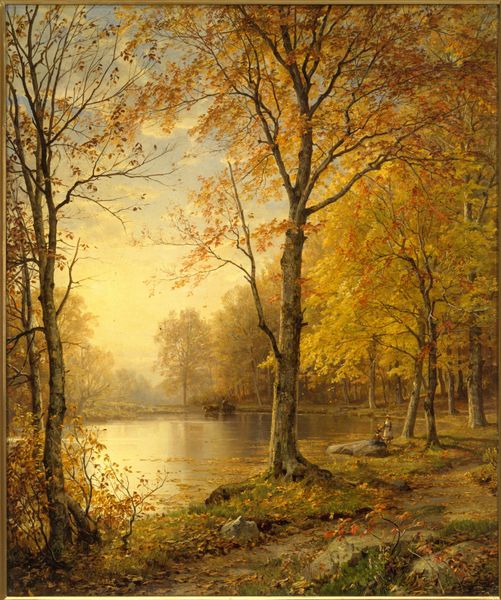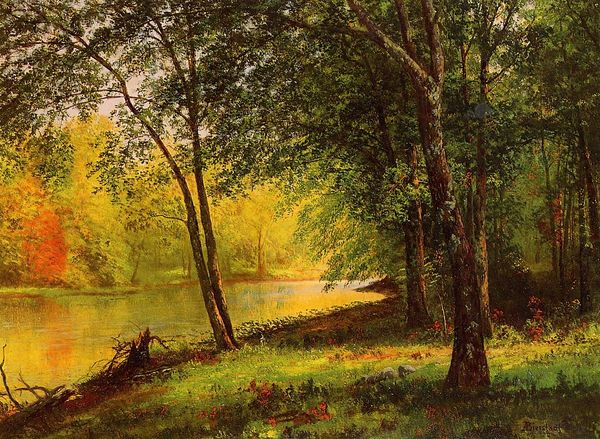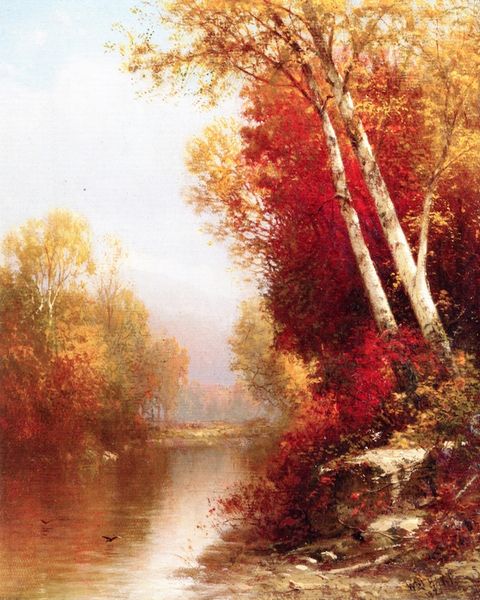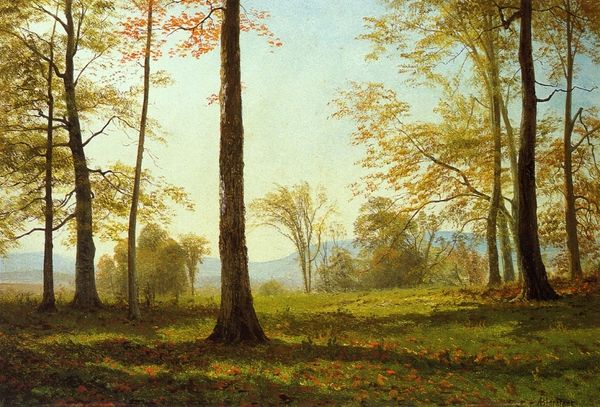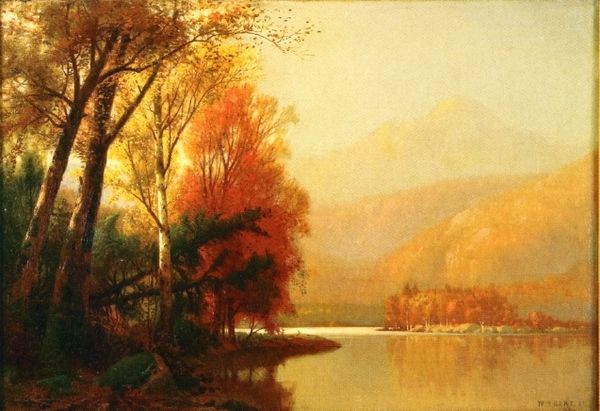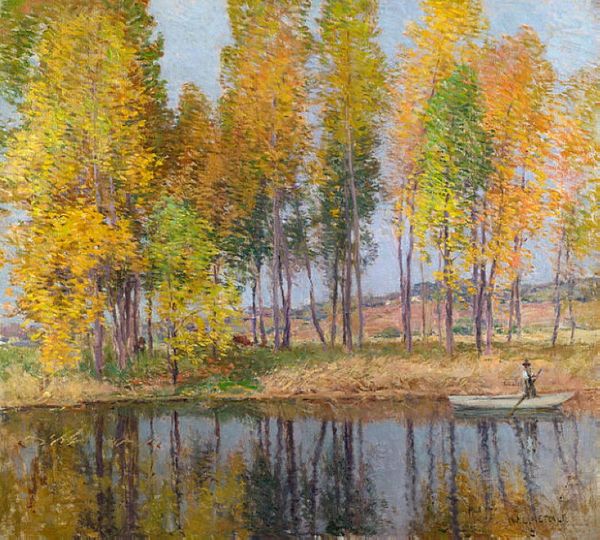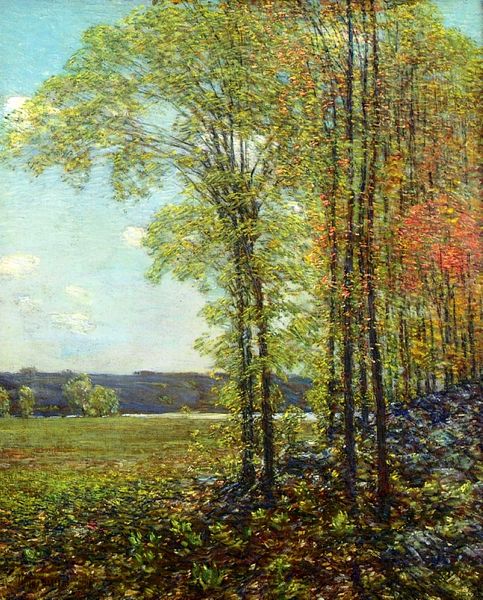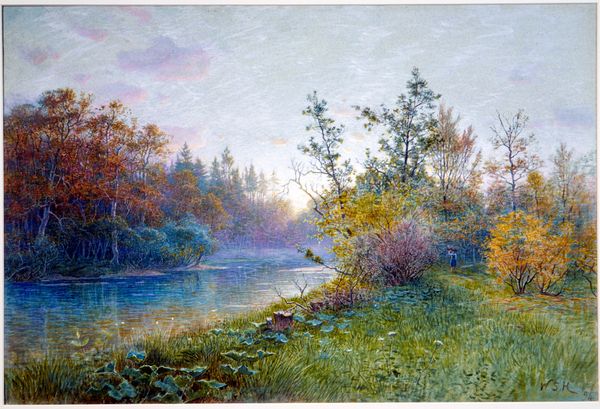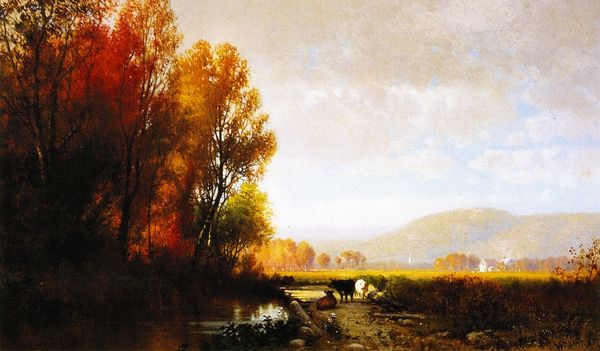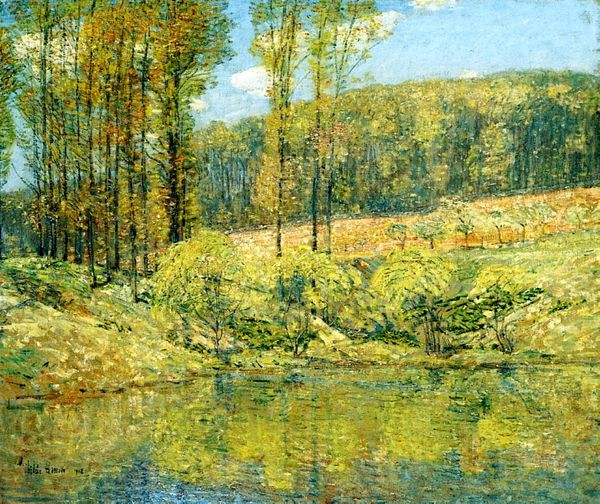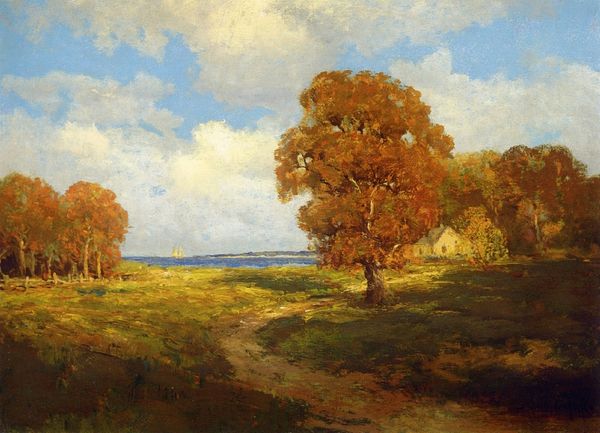
plein-air, oil-paint
#
plein-air
#
oil-paint
#
landscape
#
impressionist landscape
#
romanticism
#
hudson-river-school
#
realism
Copyright: Public domain
Albert Bierstadt painted “A Quiet Lake” in the late 19th century, a time when the American West was seen as a symbol of promise. Bierstadt's idyllic landscapes, while beautiful, often glossed over the realities of westward expansion, including the displacement and mistreatment of Native American populations. He was celebrated for his grand depictions of nature, yet his work also served as a tool for promoting a particular vision of American identity, one that was rooted in the idea of manifest destiny and the subjugation of indigenous peoples. As you gaze upon the serene lake and the golden hues of the trees, consider how this image both captures the allure of the American landscape and obscures the complex history of the land and its original inhabitants. Can we appreciate the beauty of the scene while also acknowledging the stories that have been left out of the frame?
Comments
No comments
Be the first to comment and join the conversation on the ultimate creative platform.
